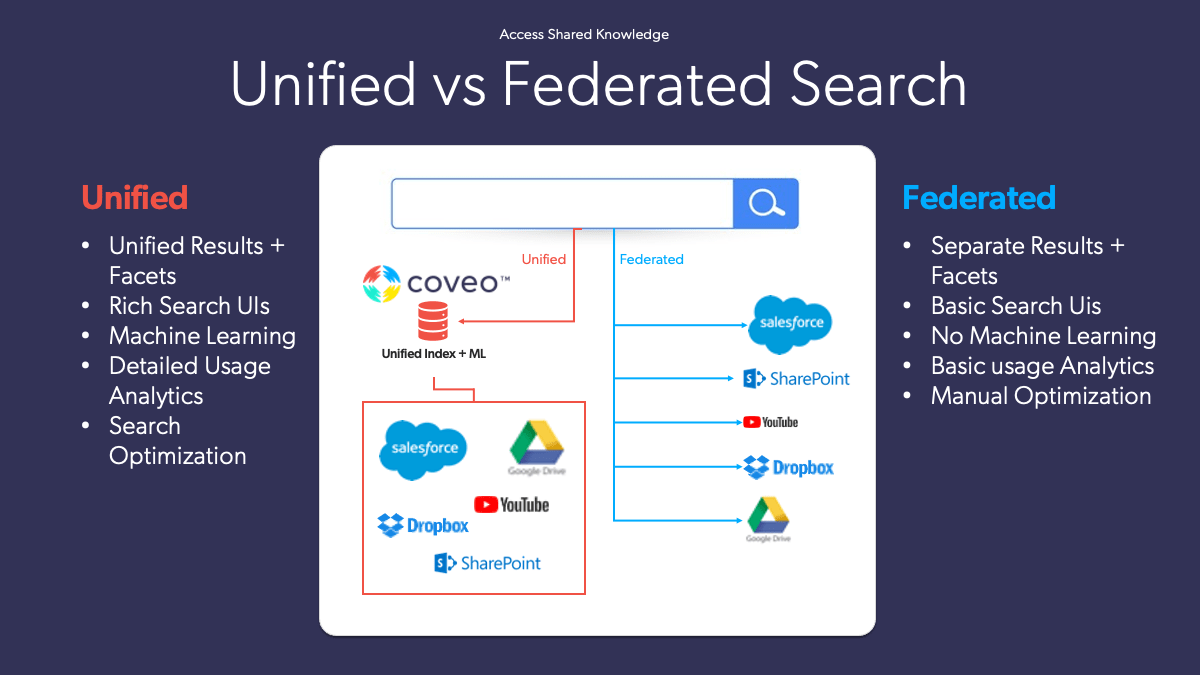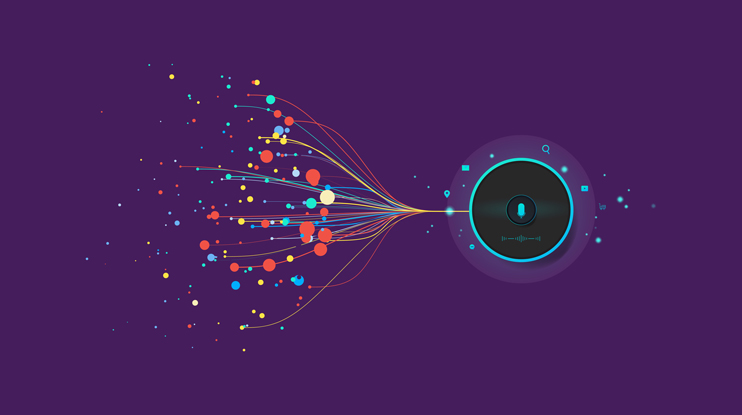Digital assistants are just one example of how the Internet of Things (IoT) has penetrated our daily lives, both personally and at work, and that connectedness is expanding.
The IoT industry is expected to grow by more than21% CAGR over the next five years. Yet “cognitive overload” is more prevalent than ever, as people upgrade or obtain consumer products that now have technology built in, while also working with an ever-greater array of software tools on the job, designed to help streamline communications, projects, meetings, and tasks.
With all this technology swirling around us—and more than 18 months of a global pandemic—it’s no wonder that “cognitive overload” feels like abrick to the face.
Large tech companies started addressing the need to help people overcome this overload in the late 2000s and early 2010s with virtual assistants such as Siri, Cortana, and Alexa making their debuts. Other companies have wholly embraced the “chatbot” virtual assistant, in an effort to help their website visitors get answers quickly with the entry of a few keywords.
Whether a broad virtual assistant like Siri, or a more focused assistant like a chatbot, these applications are only a medium. Their value is derived from the information and content they can draw on to provide answers to employees’ questions. The pressure, then, is on the virtual assistants—or, more accurately, the companies using them—to understand where this information resides, and how to make it available to employees in their flow of work.
Moving Beyond “What’s the Weather?”
The needs of the business space brings a laundry list of requirements when it comes to implementing virtual assistance—each more critical than the last. A successful virtual assistant needs to go beyond the automation of repetitive tasks like administrative support and data entry.
Each organization’s unique language, acronyms, nuances of the company culture, and industry phrases comprise some of the technology inputs to be considered. Employees spend2.5 hours of every day searching for information they need to do their jobs—and 41% of all information provided by companies to their employees is irrelevant to their specific role. This type of situation can be helped by an intelligent assistant, but not with a band-aid approach.
Creating a truly helpful, intelligent virtual assistant requires a holistic strategy. As previously stated, a virtual assistant is only a medium through which users access information. Understanding where that information resides and successfully connecting the virtual assistant to those sources so it can provide relevant answers is the make-or-break success metric.
In addition, much like a real-world personal assistant, a digital version should beaccessible anywhere—employees shouldn’t have to leave their work experience by opening a new UI or browser tab. The virtual assistant should be present when and where it’s needed.

And on top of all of that? The assistant needs to know its stuff—it should be able to pull on the collective intelligence that the business has in both its databases and in its people. After all, an organization is only as strong as its employees. All of whom are constantly generating reams of content in the form of knowledge articles, forum posts, Slack messages, and so much more. A good virtual assistant needs to be constantly ‘plugged-in.’
Users will be quick to judge; is this just another cumbersome tool to add to their workday? If the technology is difficult, slow, or just plain wrong, tens of thousands of dollars for that implementation could be out the door.
Then there’s security. With regular occurrences of hacking and companies’ systems being held hostage, the artificial intelligence (AI) powering the virtual assistant application and the information it can search must be asairtight as the business’s financial system. It must also be able to discern legitimate search requests from hacking attempts, which can create steep machine learning curves in complex industries.
Now add voice commands, and the dynamics of virtual assistant technology can become overwhelming.
Self-Service Technology is In-Demand Technology
You may be thinking, “Is virtual assistant technology right for our business, given the many, many hoops we’re going to have to jump through?” Per its 2021 CX Reveals Self-Service Challenge report, Gartner thinks so:
“To sustain use of emerging self-service channels and ensure successful customer experiences beyond 2020, CIOs must optimize chatbots and virtual assistants for highest and best use.”
The familiar and pervasive use of internet search, and the emergence of chatbots as a common tool, now make self-service technology a demand from all audiences. Yes, website visitors seek quick answers via chatbots to avoid long telephone holds. Employees are consumers as well, in a different part of their day, meaning they’ve gotten used to the virtual experiences and levels of customer service provided by tech giants like Netflix and Spotify.
This can lead them to wonder why their day-to-day work experience is so difficult—especially when it impacts their job proficiency and satisfaction.
Add the prevalence of working from home imposed by the COVID-19 pandemic, preventing employees from asking their cubicle or desk neighbor a quick question about that latest project. This could be resolved with a quick Slack conversation or huddle, but what if you’re not sure who to message?
Intelligent Swarming℠ Feeds the Hive
Enter the Intelligent Swarming framework*, a concept coined by theConsortium for Service Innovation. The Intelligent Swarming framework garners the collective intelligence of employees and teams within the business to create a framework that circles back to support those employees and teams.
Every employee creates a unique knowledgebase of their own in a business. From the assets they create each day doing their job, to their email and instant chat communications, to the knowledge gleaned by participating on teams and committees—each person develops a perspective and intelligence about the business that is highly valuable.
An Intelligent Swarming model taps into an employee’s personal intelligence and matches information requests to the persons or team most likely to have that information. Ultimately, it aims to increase engagement and loyalty from both employees and clients, and to use improved problem-solving to deliver a better employee and customer experience.
It works best on novel questions that haven’t been previously resolved. Used within a Knowledge Centered Service environment, these questions can be captured, digitalized, and indexed in a knowledge article for similar situations in the future—an especially powerful tool in thehybrid workplace.
Sounds great, right? These articles can then be drawn upon by the machine learning that makes a virtual assistant smarter as it consumes data over time. Tribal knowledge is drawn from employees and teams and all the work assets they create, making it available to solve future problems. But this only works when all of that knowledge is accessible.
Some folders on the shared drive are security-protected and only accessible by specific teams. Other assets may reside on employees’ computers locally, especially if they’re still working from home. Instant messaging apps contain tons of knowledge, but can be difficult to search.
These scenarios don’t lend themselves to rapid information and answers. So what do you do?
One Index = A Unified Index
Optimize your virtual assistant by connecting it to as many relevant sources of content as possible—including assets in the CMS, ERP, and CRM such as Microsoft SharePoint or Google Drive, as well as conversational content that resides in platforms such as Salesforce’s Slack. And then make it self-sufficient with machine learning, enabling it to learn through data ingestion and interaction with users.
Worried about having to make tons of point-to-point connections between your systems and your virtual assistant? Avoid all of that with aunified index. A unified index is exactly what it sounds like—everything in one place—to compile all the intelligence created throughout a business. Contrast that withfederated searches, where a single search box sends the user’s query to multiple, external indexes for a response-without ranking them for relevance.

A truly unified index relies on the prioritization of information to deliver the best results. This means that the relevance rules for Salesforce Knowledge articles, for example, may be different from the rules applied to SharePoint for documents residing in that system.
When indexinginstant messaging platforms like Slack, a unified index becomes even more important. For example, querying, “When is the mapping software release?” could deliver a wide range of results. In these conversational applications, relevance ranking rules must distinguish snippets such as, “Let’s discuss the mapping software release today at lunch,” from other snippets such as, “The mapping software release is set for January.”
The Coveo platform uses machine learning to deliversmart snippets: by identifying queries typed as questions, the search function can peer into a myriad of documents and bring the answer to the search results page—without the user having to click to a webpage or document with the answer.
Look for Technology Fluidity
It’s also important that the unified index is built with a platform-agnostic tool to connect content silos. Many businesses today use more than one platform; for example, Linux for software developers and Microsoft Office for the human resources team. People are also much more technology fluid than they were even five years ago.
Work environments can require that employees use a specific platform in the office, while they choose a different platform for their personal devices. This fluidity of technology on multiple platforms, across multiple devices, drives an expectation that the information needed should be accessible on whatever device is handy.
When evaluating intelligence platforms—or what we like to call arelevance platform—to power your virtual assistant, it’s important to choose one that can act as a backbone for the other systems and software in your workplace ecosystem. Employees all have different workflows: sales and marketing spend their day inside Salesforce, while IT and R&D will feel more at home inside Jira and Confluence. The throughline for an organization might be its instant messaging system.
Your relevance platform should not only be able to pull content from different platforms and databases, but also push that content into an employee’s flow of work—wherever that may be.
The same goes for handling different kinds of content—whether structured or unstructured. Just as they have their preferred programs and systems, employees also have preferred file formats. Your search shouldn’t be restricted because essential information is captured in a PDF or PowerPoint.
Because all content sources and types are being drawn upon, you know your virtual assistant can provide the most accurate, up-to-date information for a query.
You keep your systems, while the relevance platform makes them smarter.
Help Your Virtual Assistant See the Full Picture
Even if you have the nicest virtual assistant with cutting-edge machine learning, it’s basically worthless if its knowledge comes from predefined and static sources of data. At Coveo, we can integrate virtually any type of content your business produces. So our notion of a “virtual assistant” evolves at the same rate as the enterprise ecosystem.
Coveo believes that a business’s intelligence resides in the “hive mind” that colleagues create by working together. While this concept always existed, now we can digitize it, index it and leverage this dynamic intelligence to expose it at scale, bringing the real value into a virtual assistant. Coveo is your workplace backbone-it connects all the dots.
Dig Deeper
AI can do much more for your business than just create a successful virtual assistant. Learn more on how AI can enhance enterprise search—and even transform it intointelligent search.
The workplace is shifting to remote work—is your organization keeping up? Here’s our guide toBuilding a Connected Workplace for Your Remote Workforce. In it you’ll find best practices to keep employees connected and informed in the virtual office.
*Intelligent Swarming℠ is a service mark of the Consortium for Service Innovation™


